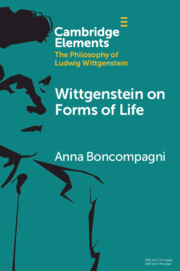Element contents
Wittgenstein on Forms of Life
Published online by Cambridge University Press: 12 September 2022
Summary
- Type
- Element
- Information
- Online ISBN: 9781108946513Publisher: Cambridge University PressPrint publication: 06 October 2022
References
- 14
- Cited by



